Measuring instruments in metrology are those tools which are used to measure any distance, length, angle, curve, arc or size of any object. In the production of any product, precise measurement is key factor for its sound design. If we do not have proper measuring instruments, we cannot design any quality product.
Every manufacturing firm uses different types of measuring instruments with different accuracy and precision. The manufacture cannot build any product without these tools. Today we will describe most of these measuring instruments which should be available in a manufacturing plant. The branch of engineering deal with these instruments is called Metrology.
In this article we will discuss briefly about some important measuring instruments with diagram used to measure distance, angle and surface flatness.
Note: This article does not contain details of these instruments. It only provides general idea of measurement and its instruments.
Types of measuring instruments:
According to the parameter which is to be measured like length, angle, surface arc etc. measuring instruments can be classified into following ways.
- Linear measurement
- Angular measurement
- Surface measurement
All of these measuring instruments can be further classified into Non-precise measuring tools and precise measuring tools. We will discuss all of them one by one.
1. Ruler:
Ruler or steel ruler is a simplest linear measurement device. It made by wood, steel or plastic and generally measure length, width and height of given specimen. Most common ruler has length 30 cm but also available in length ranges from 10 cm to 100 cm or more. It is mostly used in schools, carpentry shops and for draftsman.
2. Roll Ruler:
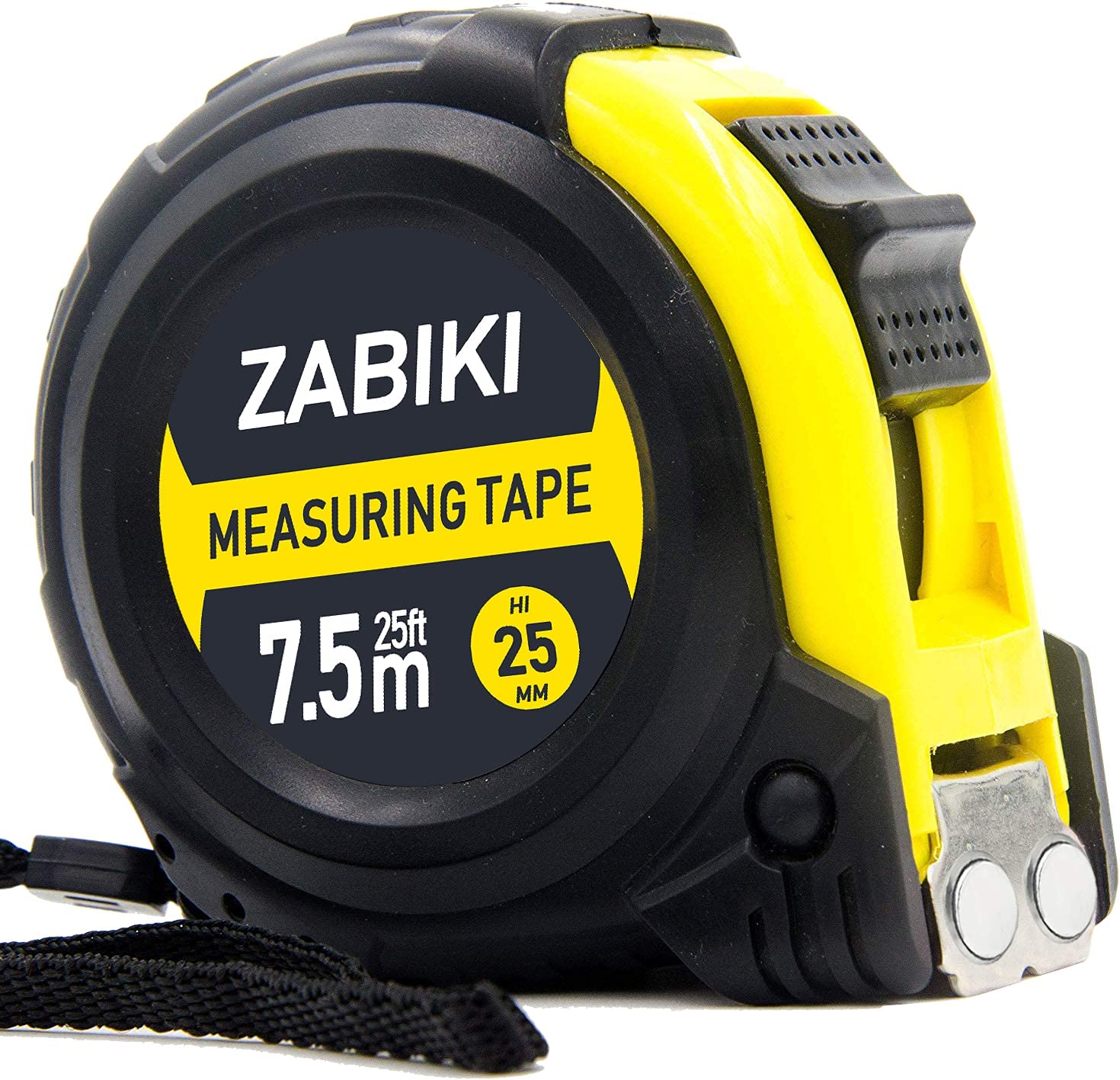
Roll ruler is also a non precise measuring instrument which is used for measure length of an object. It is similar to steel ruler but can measure long distance like 100 m etc. it generally made with steel strip which roll into a chamber. Sometimes fiber is also used to measure long distance.
Also Read: What is Dial Indicator?
Also Read: Types of Pressure Measuring Devices
3. Calipers and Dividers:
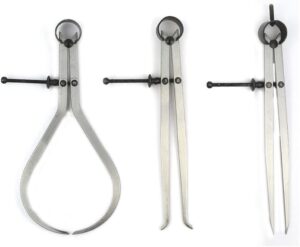
It is used to measure length between two opposite faces of an object like diameter, radius etc. These instruments have two tips which set at the measuring point and after it the caliper is removed. The distance between those two point measures by the help of ruler. Calipers are used for measure both inside and outside distance between selected points.
4. Telescopic Gauge:
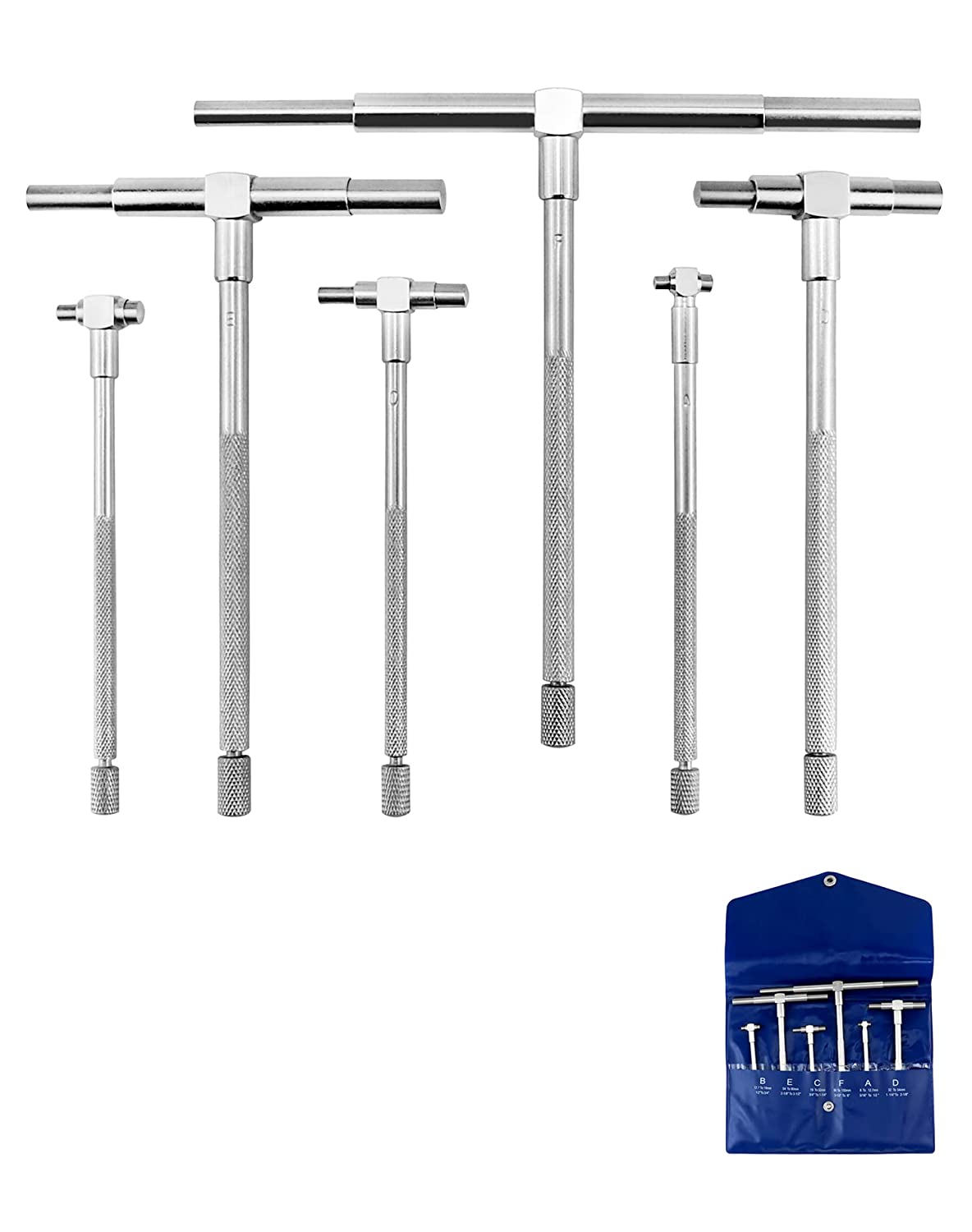
It is an instrument which is used to measure bore diameter with the help of micrometer. There are two types of telescopic gauges. First one has two plunging telescopic rods and other one has one rod. These rods are plunged with the help of internal springs. There is a locking screw which when rotate clockwise, locked the telescopic rod and when rotate anticlockwise again free it.
To use this measuring instrument first the spring loaded plunger section put inside the bore and when both of its end of rod touches the circumference of bore, move the locking screw clockwise and remove the plunger out of the bore. Now with the help of micrometer measure the length of the rod which is equal to the diameter of the bore.
5. Depth Gauge:
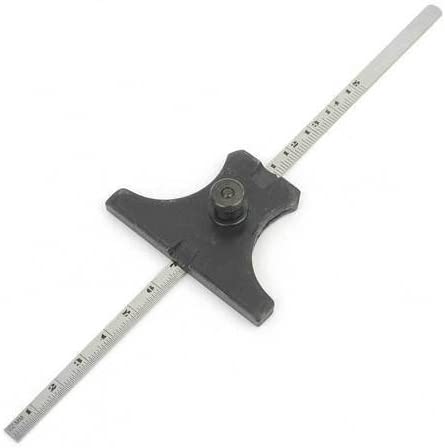
As the name implies, it is used to measure depth of bore or any other surface from a reference surface like holes grooves etc.
6. Micrometer:
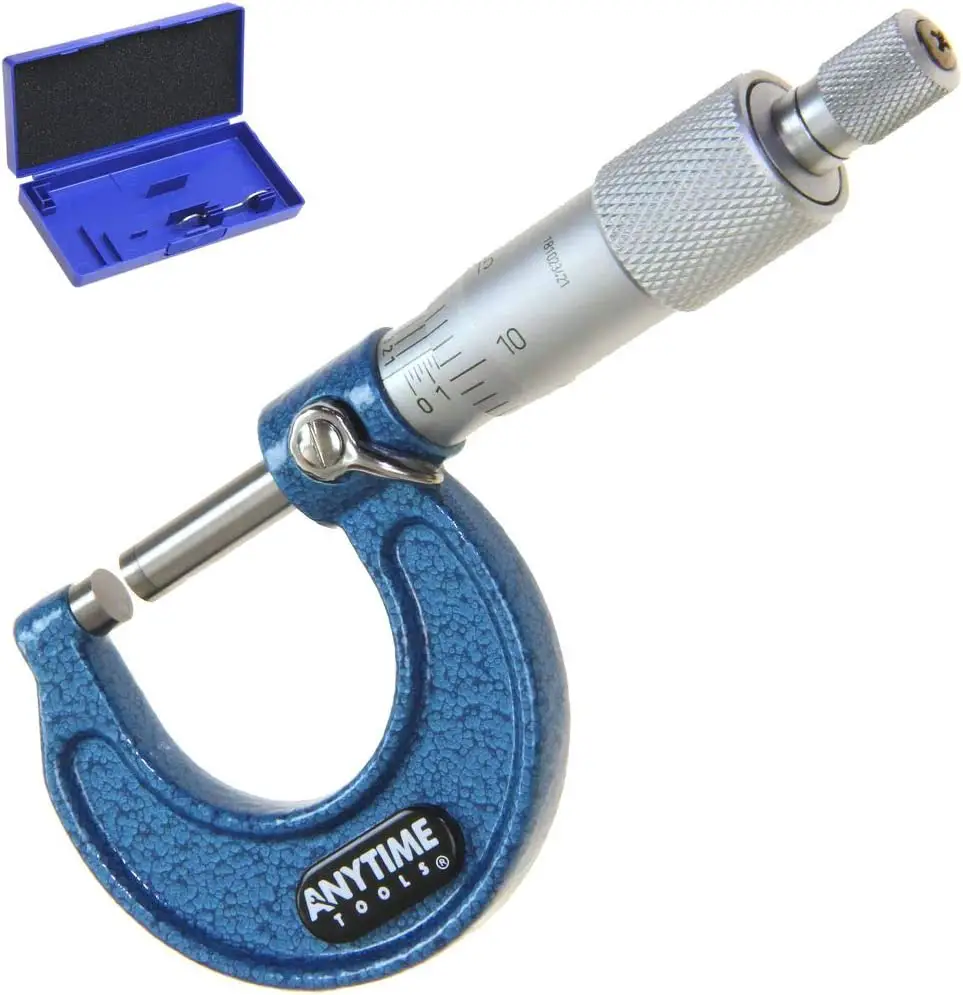
We all have heard the term micrometer in our life span. It is a precise measuring instrument use to measure small length or diameter in millimeter.
It is composed with the parts called C typed frame, anvil, spindle, barrel, lock nut, screw and ratchet stop. The object which length or external diameter is to be measured placed between the C Shaped frame and the anvil and fixed by spindle rotating the ratchet until the spindle touched the object.
The reading noted form the vernier scale and circular scale and calculate the measured length. In the digital micrometer the length is directly shown into the digital meter.
6. Vernier Caliper:
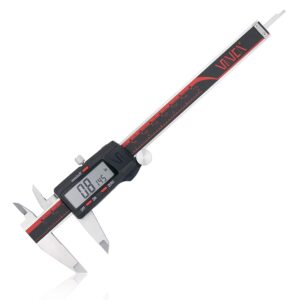
It is another precise instrument to measure length, external diameter as well as internal diameter. it is composed with main scale, vernier scale, lower jaw, upper jaw, depth rod, thumb screw and lock screw. To measure any length or diameter, first check the main and vernier scale are aligned. now placed the object between upper jaw (for length and external diameter measurement) or between lower jaw (for internal diameter measurement). After it move the vernier scale and fixed the object between the jaw and fixed this scale by lock screw at this position. Now read the reading from main scale and vernier scale and calculate the length. In digital vernier gauge, the measured length is directly shown into digital meter.
There is another vernier gauge known as vernier height gauge. It is use to measure height of various objects. It is similar the vernier caliper equipped with a special scribbling tool and measuring jaw.
7. Slip Gauge:
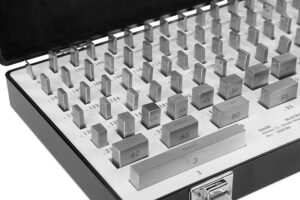
Slip gauge is use to measure height of an object or set the measuring standard. These gauges measure very precisely the height of an object. They developed by Johansson so sometimes known as Johansson gauge.
These are the rectangular block of steel with same cross section and have accuracy of 0.005 mm. These blocks are made in metallurgy laboratory with very precisely. To measure the height, two or more blocks are used to fill the gap between which heights to be measured. Finally add the height of these blocks.
Two slip gauges in precision measurement are joined by the process called wringing process.
8. Comparator:
As per the name, comparator is a linear measurement device which only compares two dimensions. It cannot be used for absolute measurement. Basically it is used for standardization of measuring instruments. It generally indicates the difference between size and the standard gauges like slip gauges etc. it picks the small variation in size and magnifies it.
9. Protractor:
It is use to measure angle between two lines. It is generally made with transparent plastic and half circular in shape. Angles from 0 degree to 180 degree are printed on it. It is generally used by children in schools to measure angles.
10. Bevel Gauge:
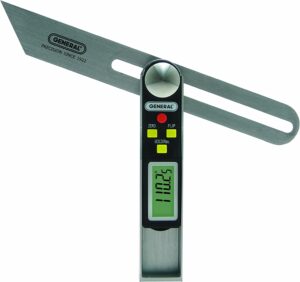
The bevel gauge is used to measure angle by moving bevel. It is made with two elements and a protractor is attached with it.
The handle is mostly made by woo or plastic and the blade is with steel. Both blade and handle is pivot with a wing nut. For measuring angles, the handle is remains straight and the bevel is moved at the point which angle is to be measured.
11. Elbow Ruler:
It is a instrument used to measure right angle. Elbow ruler is like L in shape. One are of L is fitted with a steel scale and other one is a wooden or plastic handle. Sometimes both are fitted with scale. It is use in carpentry shop.
12. Bevel Protractor:
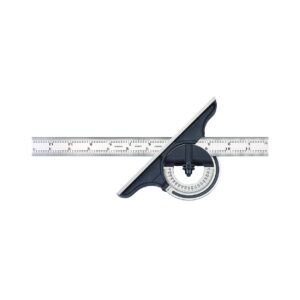
It is a precision measuring instrument which has one or two swinging arms with the protractor and help to measure angle with accuracy of 5 degree 1/20 degree or 5’. It can measure angle from 0 degree to 360 degree accurately and used to measure acute angles.
Also Read: Temperature Measuring Devices
13. Sine Bar:
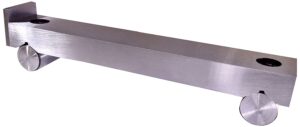
Sine bar is another precise instrument used in angle measurement in machine shop. It is a steel bar made with lapped steel and not wider than 1 inch. It consist two precision ground cylinder attached to the ends of the bar and the distance between there is accurately controlled. Angles are measured with this bar with the help of sine blocks.
14. Angle Gauge Blocks:
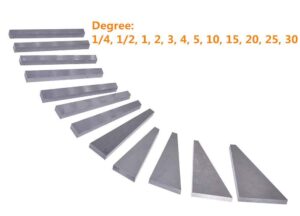
These instruments are used to measure small angle precisely. These are wedge shape blocks with accurate angles. It is manufactured with tolerance of 1/800 th degree. It is made with hardened tempered stainless steel.
15. Spirit Level:

Spirit level is another measuring instrument which is used to measure precise angle with the help of air bubble. It is a sealed transparent glass or fiber tube which content alcohol and a air bubble.
It is invented in 1661 and first used for telescope and later on it used for surveying instrument. This tool indicates how parallel the surface is from the ground level or relative to earth.
There are different types of spirit level are used by different shops like carpentry shop, brick makers shop, building maker, surveyor etc.
16. Clinometer or Inclinometer:
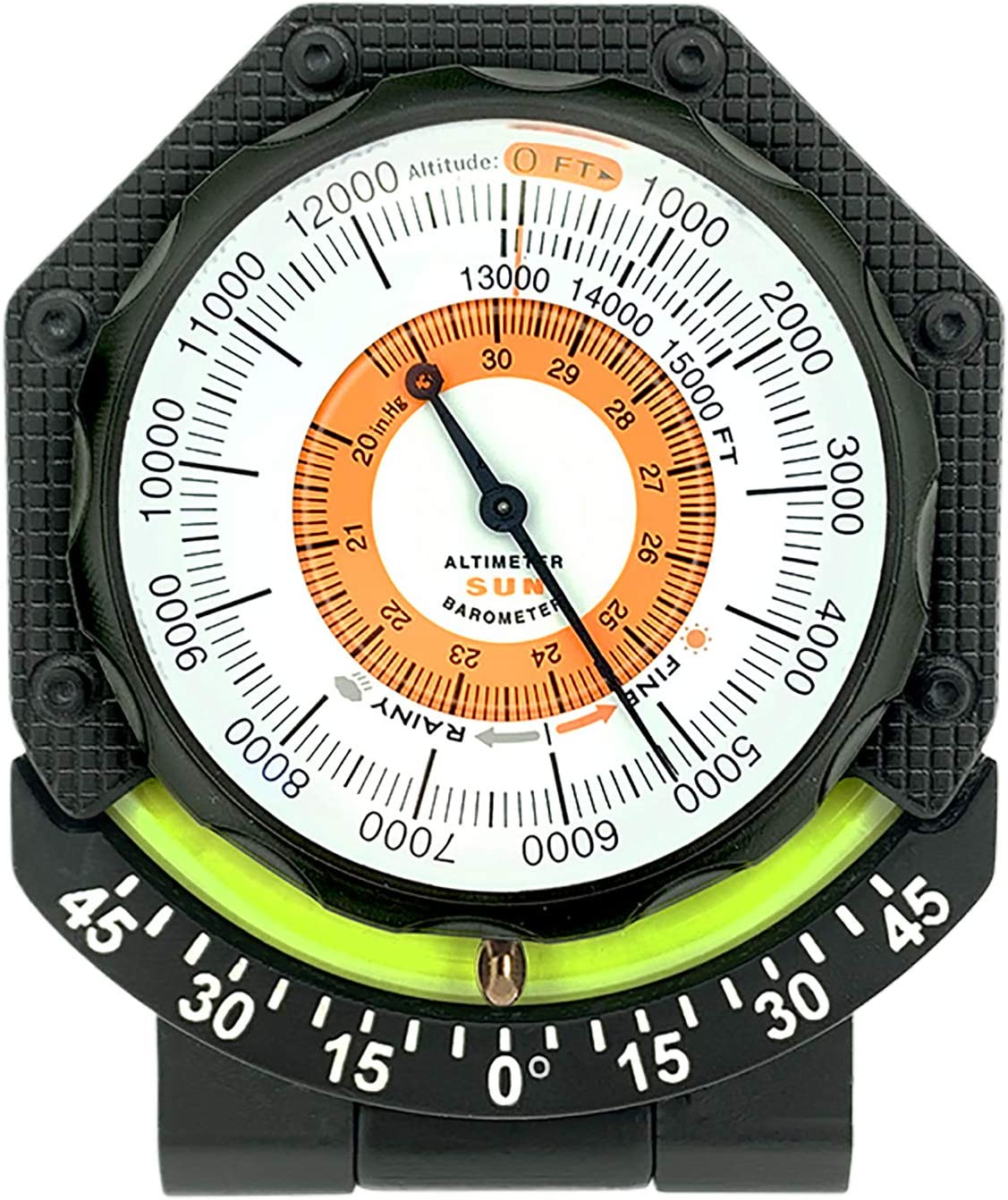
This is precisely measure angle of any slope or elevation with respect to gravity or earth. It is a special application of spirit level in which spirit level is used to measure any angle or slope of any inclination with respect to ground. It is also called till meter or slope meter.
17. Surface Gauge:
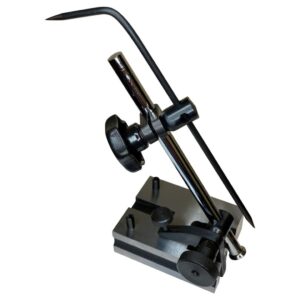
Surface gauge is a tool which s mainly used in machining to measure the accuracy of any surface. It is a dimensionless measuring tool in which a scriber is mounted on a adjustable stand and determine whether a dimension is larger or smaller than the reference dimensions.
18. Optical Flat:
Optical Flat is used to measure flatness of any surface with the use of physics phenomenon interference. It is a flat polished surface which placed contact with a surface to be tested. If the tested surface is not flat, a air wedge is formed between the test plate and work plate. The amount of interference from air wedge is used to calculate the flatness of tested plate.

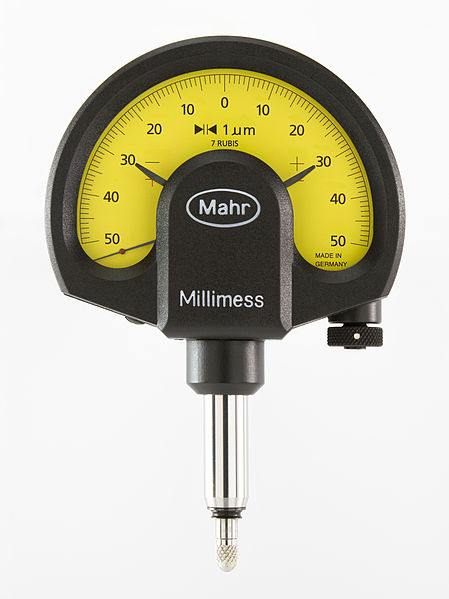
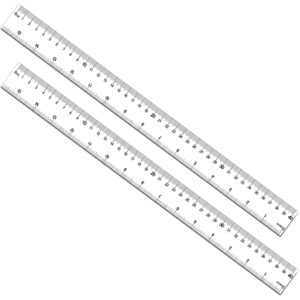
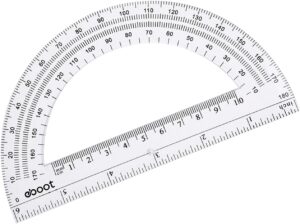
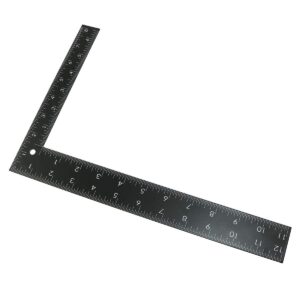
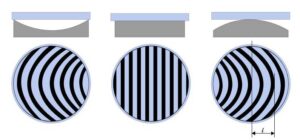

Require Measuring instruments for new machining plant